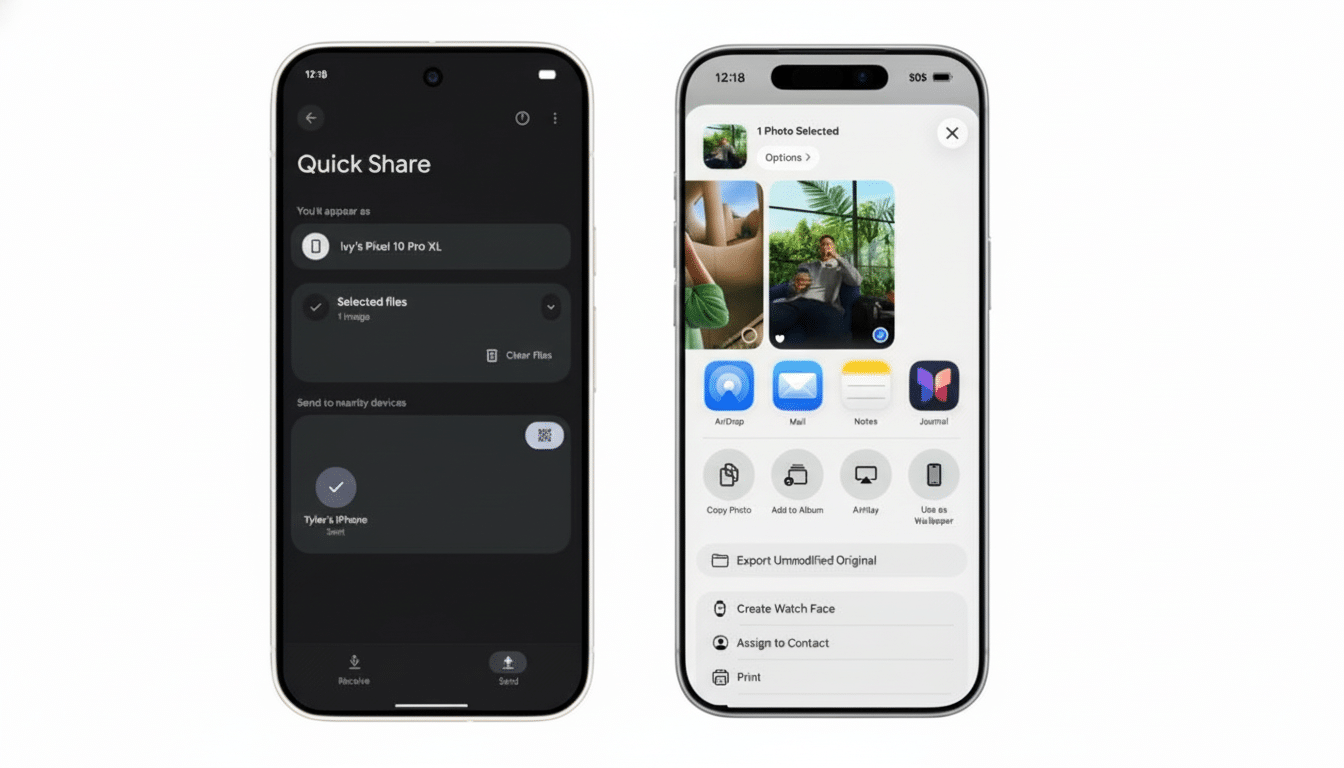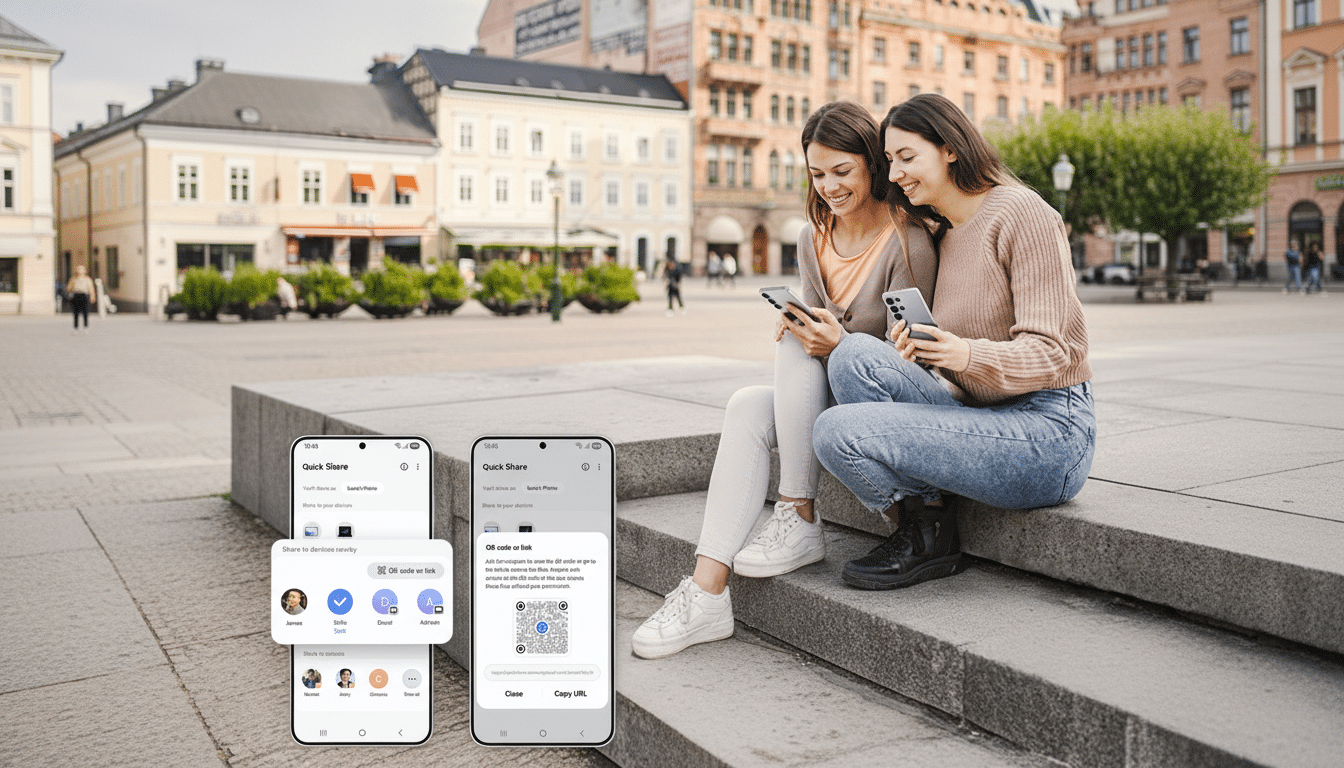Next year, your Snapdragon Android phone could send files to an iPhone as easily as a Pixel 10. Qualcomm just confirmed that it is opening up Snapdragon-powered devices so they can send files in Pixel-like AirDrop fashion, or “Peer-to-Peer Nearby Sharing” as Google used to refer to local file transfers, without needing intermediaries like third-party apps or the cloud for a detour.
It comes after Google discreetly introduced true AirDrop integration in the Pixel 10 via Quick Share. Qualcomm says it is “coming soon to all Snapdragon platforms,” noting a wider rollout well beyond Google’s own hardware.
- What Qualcomm said about Android-to-AirDrop support
- How Quick Share communicates with AirDrop
- Who gets Android-to-AirDrop support and when to expect it
- Security and privacy considerations for cross-platform sharing
- Why this is such a big deal for Android users and OEMs
- What to watch next as Android-to-AirDrop support rolls out

What Qualcomm said about Android-to-AirDrop support
In response to Google’s announcement, Qualcomm has said that the feature will be available when platform support is enabled for Snapdragon devices. That doesn’t help if you have one of many other supported handsets, though Qualcomm wasn’t listing individual models or generations of chip as compatible here; the implicit message is that some sort of combination of firmware, radio stack, and OS-level update will free up the functionality across recent Snapdragon phones regardless.
And that does matter, because Qualcomm silicon serves a large portion of the premium Android crowd. A single enablement can reach tens of millions of users very quickly, since observers such as Counterpoint Research have been tracking Qualcomm on a regular basis as the top supplier of chipsets in the Android-flagship tier.
How Quick Share communicates with AirDrop
The solution isn’t Apple revealing its secret sauce for AirDrop. AWDL, Apple’s proprietary peer-to-peer Wi‑Fi protocol layered over discovery based on Bluetooth, is still part of the mix. Instead of waiting on Apple to budge, Google included support for AWDL in Quick Share so that Android gadgets can talk transfers with iPhones while still using their own discovery methods.
There’s also been speculation that Apple was required to change under European interoperability rules, but the Digital Markets Act mandates only that Apple support Wi‑Fi Aware for baseline discovery. Regulatory filings explicitly indicate that AWDL can simultaneously keep going with Wi‑Fi Aware. This is Google and friends out to do that extra bit of engineering effort to cover the gap — not an Apple-required retreat.
For all practical purposes, that should make for Wi‑Fi Direct–class speeds with large files — say 4K video or lossless audio — without the need to use cellular data or the cloud. Real-world performance will of course be limited by the radios and hardware on your devices, but peer-to-peer transfers can frequently reach levels above 100 Mbps in optimal conditions.
Who gets Android-to-AirDrop support and when to expect it
Already, Google has turned on the feature for Pixel 10 and said it would roll it out to more devices. Qualcomm’s participation indicates that there is a platform-level route for brands like Samsung, OnePlus, Xiaomi, and others who ship Snapdragon flagships as well as mid-rangers. Nothing has also said it’s working to bring the feature to its phones, which makes it one of the first non-Google OEMs to publicly confirm.

Rollout complexity will vary. OEMs may also have to send driver updates for Wi‑Fi and Bluetooth subsystems, include new Quick Share components, and conduct interoperability testing. Carriers and regional SKUs can introduce scheduling complexity. Look for support in the first wave on recent Snapdragon 8‑series and newer 7‑series devices, with older models left to depend on vendor timelines.
Security and privacy considerations for cross-platform sharing
The idea of cross-platform sharing immediately invites predictable concerns about spoofs, unwanted visibility, and encryption. Apple’s AirDrop relies on encrypted channels and user gating options; Google has emphasized that it is collaborating with industry partners to keep connections secure and user-controlled. Anticipate the usual range of visibility modes — contacts only, everyone, hidden — and device proximity checks to prevent abuse.
Enterprise admins will watch closely. If Quick Share-to-AirDrop makes its way to the masses, mobile device management policies might also require an update to address peer-to-peer file flow in regulated environments (in particular, when data loss prevention rules are applied).
Why this is such a big deal for Android users and OEMs
Interoperability has always been the missing link for mixed-device households and teams. With Snapdragon support, Android users could get the same near-universal, high-bandwidth sharing to and from iPhones that iPhone owners take for granted. That decreases friction for a range of uses from school projects to newsroom workflows to taking media off set.
It also fortifies Quick Share’s position in the wake of Google and Samsung unifying their sharing brands. Backed by chipset-level support from Qualcomm, and with increasing commitments from OEMs, Android’s peer-to-peer story transitions from “yeah, we only work within the ecosystem” to “it just works.” That’s the level above which consumers start to actually notice.
What to watch next as Android-to-AirDrop support rolls out
Key questions remain: which generations of Snapdragon are included, how quickly OEMs can certify the updates to their devices, and if Apple will change AirDrop prompts or permissions when a transfer is initiated from an Android device. Developer documents from Google and partner briefings with Qualcomm should resolve the technical matrix shortly.
If the rollout goes as planned, the days of emailing yourself a video or bouncing between chat apps just to send a file from an Android phone to an iPhone might finally be numbered.

